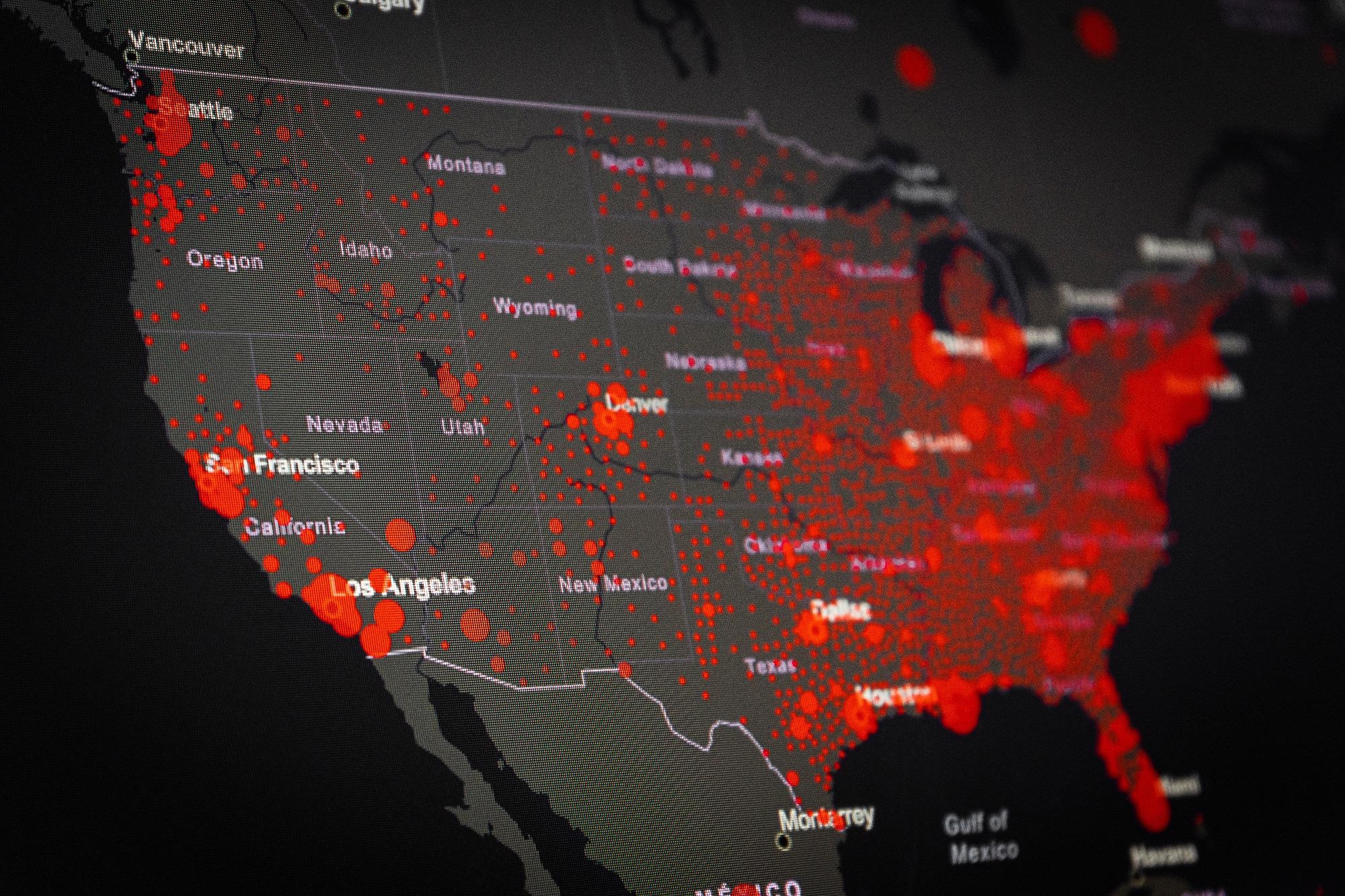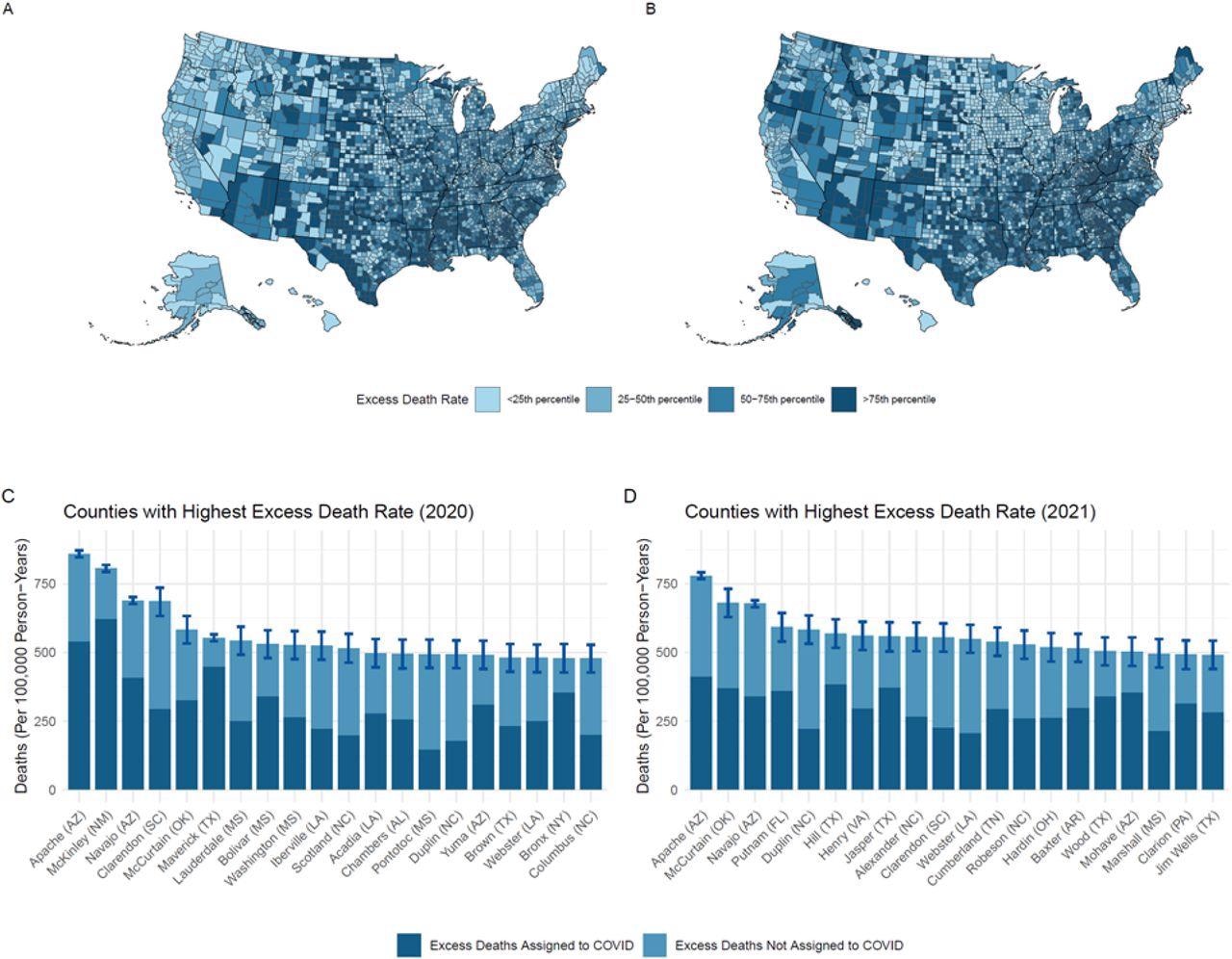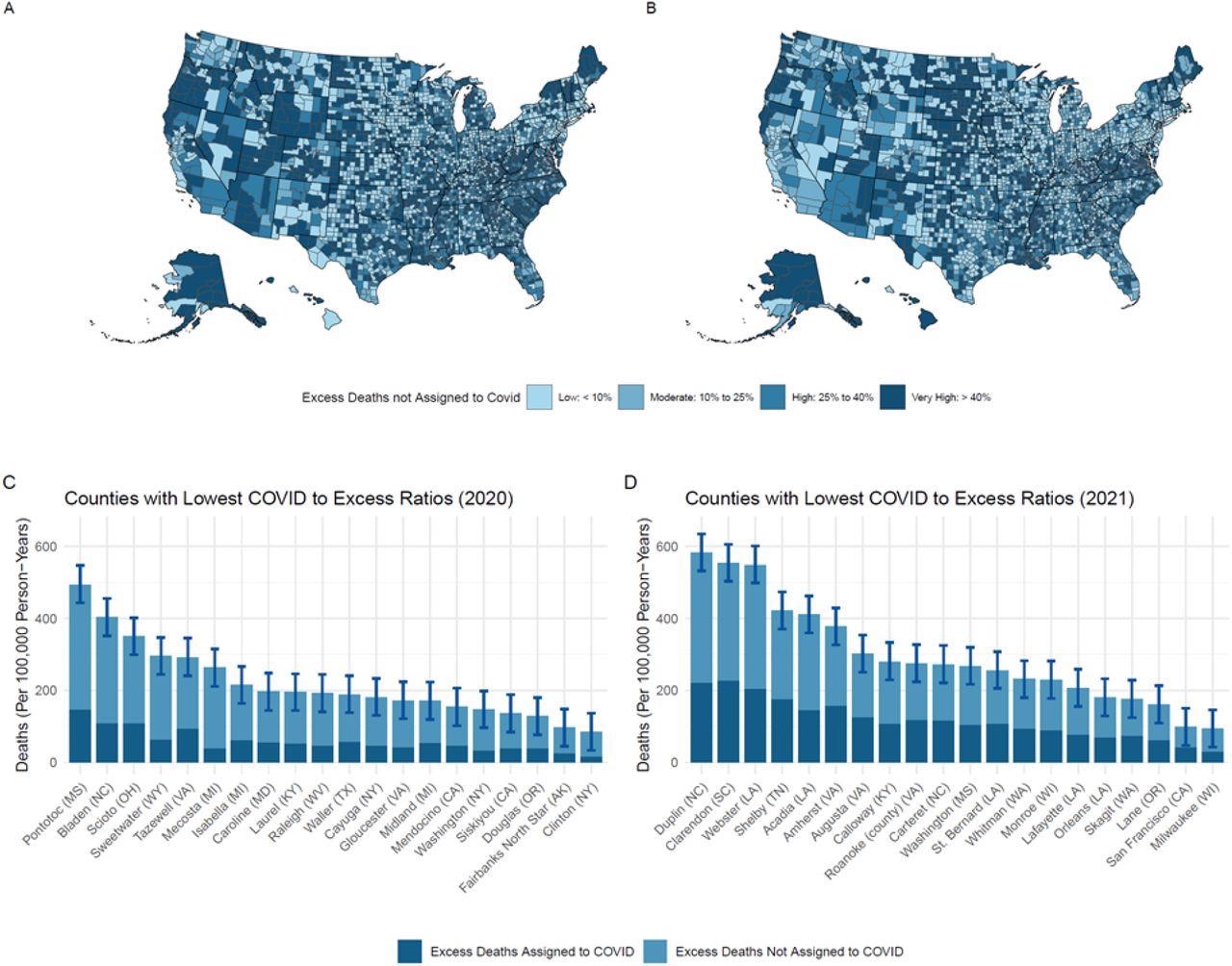Various studies have reported the usefulness of excess mortality measures in assessing the total impact of mortality caused by severe acute respiratory syndrome coronavirus 2 (SARS-CoV-2) infections. However, there is a lack of data regarding excess mortality between 2020 and 2021.
 Study: Excess all-cause mortality across counties in the United States, March 2020 to December 2021. Image Credit: Gargantiopa / Shutterstock
Study: Excess all-cause mortality across counties in the United States, March 2020 to December 2021. Image Credit: Gargantiopa / Shutterstock

 *Important notice: medRxiv publishes preliminary scientific reports that are not peer-reviewed and, therefore, should not be regarded as conclusive, guide clinical practice/health-related behavior, or treated as established information.
*Important notice: medRxiv publishes preliminary scientific reports that are not peer-reviewed and, therefore, should not be regarded as conclusive, guide clinical practice/health-related behavior, or treated as established information.
About the study
In the present study, researchers predicted county-level mortality rates in the US using data related to deaths per county between January 2015 and December 2019. The team subsequently compared these mortality rates to the estimates of expected deaths between March 2020 and December 2021 and evaluated the number of excess deaths.
The researchers obtained monthly, and yearly death counts at the county level from the Centers for Disease Control and Prevention (CDC) wide-ranging online data for epidemiologic research (CDC WONDER) online tool. All deaths caused by COVID-19 and non-COVID-19-related causes were extracted. The team selected the causes of death from the multiple causes of death database using the probable death counts for 2020 and 2021 and the evaluated death counts between 2015 and 2019. It was noted that only the deaths with COVID-19 as the underlying cause were assigned to COVID-19.
Except for the year 2020, yearly deaths for all the years included deaths incident between January to December of that year, while for 2020, yearly deaths included deaths reported between March 2020 and December 2020 to consider the pandemic's impact. The team adjusted the death rates for 2020 considering the shorter exposure time considered.
The team used estimates of yearly county-level populations from the Census Bureau in order to convert the number of deaths into death rates. Furthermore, the researchers categorized the counties into four metropolitan-nonmetropolitan categories- namely, non-metro, medium or small metro, large central metro, large fringe metro- according to the 2013 National Center for Health Statistics (NCHS) rural-urban classification scheme for counties. The counties were also classified into Far West, Great Lakes, Mideast, New England, Plains, Rocky Mountains, Southeast, and Southwest as per the bureau of economic analysis (BEA).
Using two hierarchical linear models, the researchers modeled the number of deaths for 100,000 residents (DR) observed monthly on a county level. The first model estimated the monthly DR of a county directly, and the second model predicted the yearly DR for a county before distributing the resulting number of deaths occurring over the year according to weights.

County excess mortality rates per 100,000, 2020-2021 Notes: Panels A and B show the geographic distribution of excess death rates in 2020 (A) and 2021 (B) as estimated by comparing the expected number of deaths from our model to the actual number of deaths. Panels C and D report excess and COVID deaths rates for the counties with the highest excess deaths rates 2020 and 2021 respectively. Counties with less than 30,000 residents and less than 60 COVID deaths across the two years were excluded from the rankings in the barplots.
Results
The study results showed that across the US, a total of 459,764 excess deaths were reported from March to December 2020, while 477,147 excess deaths were reported in 2021. Thus, 936,911 excess deaths were reported in one calendar year over 2020 and 2021, among which 765,743 excess deaths were due to COVID-19. In the year 2020, 207 DR were observed in non-metro areas as opposed to 173 DR in sizeable central metro areas. Furthermore, in 2021, 227 DR were observed in non-metro areas, while 163 DR were reported in small or medium metros.
Additionally, in 2020, the highest number of excess death rates were in large central metros of the Mideast and non-metro regions in the Southeast and the Southwest. In 2021, the higher excess death rates were non-metro regions and small or medium metro areas in the Southwest and Southeast.

Percentage of Excess Deaths not Assigned to Covid-19, 2020-2021 Notes: Panels A and B show the geographic distribution of proportion of excess deaths not assigned to COVID. Panels C and D report excess and COVID deaths rates for the counties with the lowest COVID to excess ratios in 2020 and 2021 respectively. Counties with less than 30,000 residents and less than 60 COVID deaths across the two years were excluded from the rankings in the barplots.
Excess mortality rates in the Far West, Great Lakes, Mideast, and New England were higher in the metro counties in 2020 and the non-metro areas in 2021. Moreover, excess mortality rates were higher in the non-metro regions of Southeast, Southwest, Rocky Mountain, and Plains areas in both 2020 and 2021. Notably, the differences between the excess mortality rates between the metro and the non-metro regions were more significant in 2021.
Almost 76% and 87% of excess deaths in 2020 and 2021 were assigned to COVID-19, respectively. This indicated that a total of 109,069 and 62,099 excess deaths were not assigned to COVID-19 in 2020 and 2021, respectively. However, in 2021, many regions in the US had areas reporting low proportions of COVID-19-related excess deaths.
In 2020, the number of excess deaths assigned to COVID-19 was higher in the rural areas than the urban areas, while in 2021, the assignment was higher in the urban areas as compared to the rural. Despite this trend, in 2020, several regions reported a lower number of COVID-19 assigned excess deaths in rural areas than in urban areas. This suggested that COVID-19 was assigned to excess mortality lesser in the rural areas throughout the study period.
The study findings showed that excess mortality rates were more accurate in presenting the impact of the pandemic across local regions. Therefore, the researchers believe that the present study's findings can be used to determine further the factors involved in excess mortality during the COVID-19 pandemic.

 *Important notice: medRxiv publishes preliminary scientific reports that are not peer-reviewed and, therefore, should not be regarded as conclusive, guide clinical practice/health-related behavior, or treated as established information.
*Important notice: medRxiv publishes preliminary scientific reports that are not peer-reviewed and, therefore, should not be regarded as conclusive, guide clinical practice/health-related behavior, or treated as established information.
Journal reference:
- Preliminary scientific report.
Excess all-cause mortality across counties in the United States, March 2020 to December 2021, Eugenio Paglino, Dielle J. Lundberg, Ahyoung Cho, Joe A. Wasserman, Rafeya Raquib, Irma T. Elo, Katherine Hempstead, Samuel H. Preston, Andrew C. Stokes, medRxiv 2022.04.23.22274192, DOI: https://doi.org/10.1101/2022.04.23.22274192, https://www.medrxiv.org/content/10.1101/2022.04.23.22274192v1